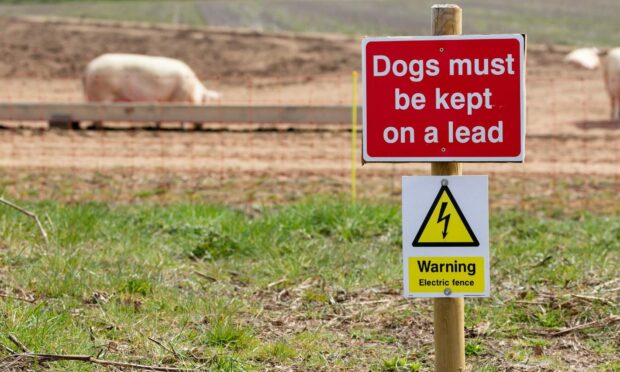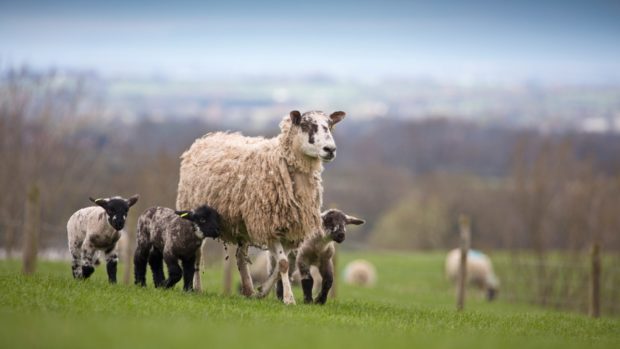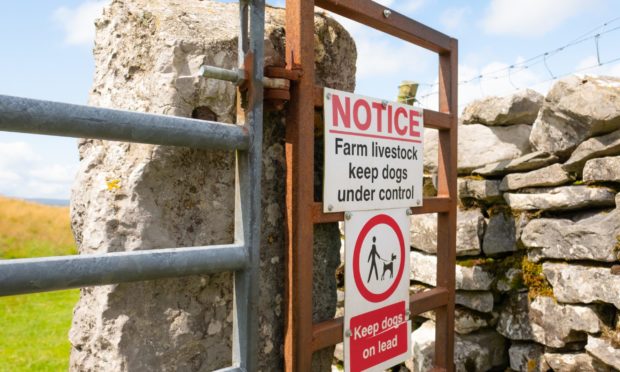With Easter and warmer weather on the horizon, farmers and landowners will soon witness an increase in the number of dog walkers on their land.
And while most people visiting the countryside do so responsibly, a small number cause headaches for farmers when their dogs worry or attack livestock.
The problem was exacerbated during the Covid-19 pandemic with farmers reporting an increase in the number of dog owners walking on their land during national and local lockdowns.
A survey by the National Sheep Association in 2021 found two-thirds of UK sheep farmers had experienced an increase in dog attacks on their animals since the start of the pandemic, while figures reveal that between April and November last year there were 103 incidents recorded by Police Scotland under the Dogs (Protection of Livestock) Act 1953.
This includes six in Aberdeenshire, eight in the Highlands, six in Angus and two in Fife.
Increase in penalties for dog owners
New legislation, which increases the penalties for dog owners who let their pets worry livestock to up to a £40,000 fine and/or 12 months in prison, has been introduced to tackle the problem.
However, landowners’ body Scottish Land & Estates (SLE), says farmers and land managers can take steps to prevent livestock worrying incidents from happening in the first place by engaging with visitors to their land.
The organisation’s policy adviser for access and rural crime, Simon Ovenden, said this is the time of year when dog attacks on livestock are likely to be at their highest.
“Too often farmers have heard tearful stories from people whose dog is likely to be destroyed because it has attacked, and that it had never worried or chased sheep before,” said Mr Ovenden.
“The farmer is understandably uninterested in the past conduct of the dog, as they collect the bloodied and ripped corpses of lambs and their mothers.”
Signs can help avoid incidents
He advised farmers and landowners to display clear, simple signs aimed at the public on their land at relevant times of the year.
“Try to offer advice in a friendly but direct way to avoid any situation escalating to an unfortunate level,” said Mr Ovenden.
“Point out any restrictions in place and explain clearly why certain areas are off limits or inadvisable to enter.”
Mr Ovenden said signs can be used to explain what responsible behaviour entails, as outlined by the Scottish Outdoor Access Code, and to highlight the tough penalties in place for dog owners whose animals attack livestock.
According to the Code, responsible behaviour includes: always keeping your dog in sight and under control; not taking your dog into fields where there are lambs, calves or other young animals; never allowing your dog to worry or attack livestock, including displaying aggressive behaviour such as barking; and bagging and binning any dog poo.
In instances where farmers and landowners come across a livestock worrying incident taking place, they are advised to phone the Police and gather as much information as possible.
“Try to get photos and descriptions of the dog, people, vehicle – if there is one – and the time of day,” said Mr Ovenden.
“And call the police using 999 stating a crime is in progress, giving as much information as possible.”
Everyone should enjoy the outdoors responsibly
Meanwhile, the Scottish Outdoor Access Code also contains advice for farmers and land managers.
They are urged to consider public access and assess relevant risks; use helpful signs, if necessary, to highlight issues to visitors to the countryside; and to suggest reasonable alternative routes if needed.
NatureScot’s recreation and access manager, Mark Wrightham, said: “We want everyone to enjoy visiting Scotland’s outdoors, but many people – particularly new dog owners – may not be aware of their responsibilities or how their actions can affect local farming or crofting communities.
“The Scottish Outdoor Access Code contains some very simple and clear advice for people who are walking their dogs outdoors and it’s particularly relevant at this time of year, during lambing season.”
The code is available to read online at outdooraccess-scotland.scot and signs for farmers and land managers can be downloaded, or purchased, from SLE by visiting the organisation’s website at scottishlandandestates.co.uk



